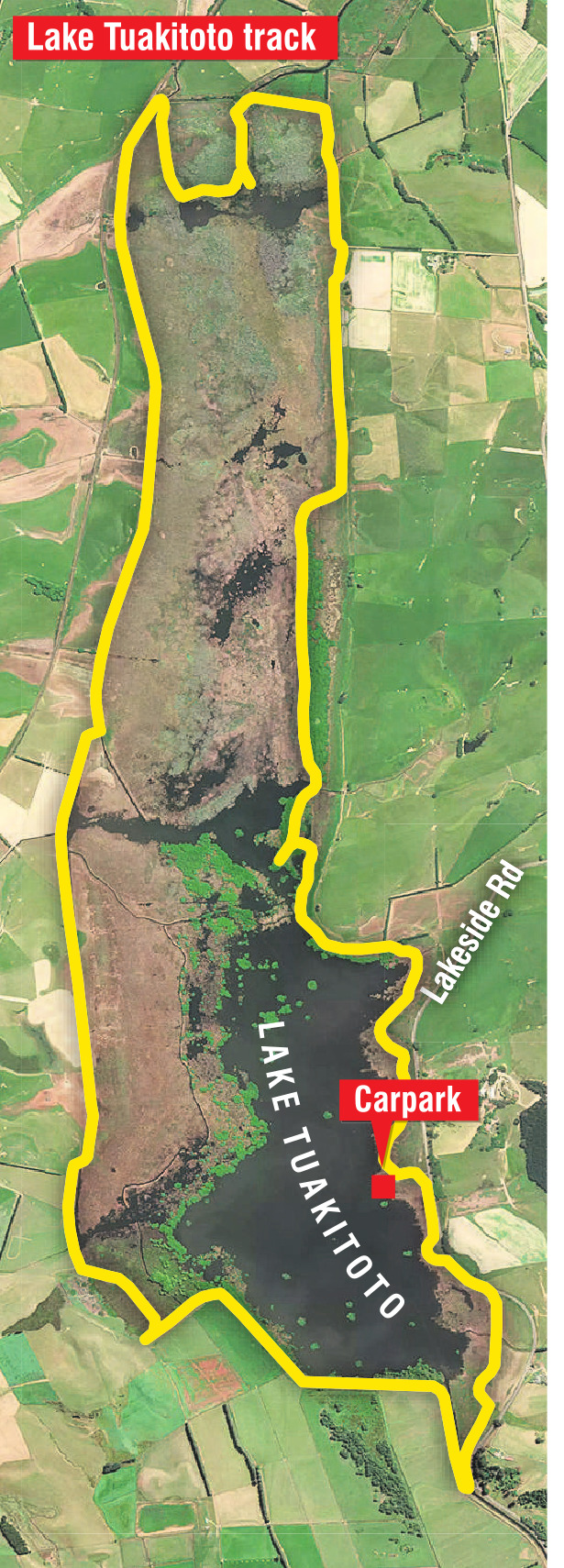
Lake Tuakitoto feels like a secret brother from another mother. Unlike Lake Waihola with its drive-by state highway, Lake Tuakitoto gets a tiny cameo of a distant glimpse from the highway just north of Balclutha.

At about 500 hectares the lake has a high quality 15km track circling it. Contrary to online folklore, the walk didn’t take me three hours, more like five, but I was probably dawdling.

There are so few people the birds are wary. Ducks startle easily, unlike the urban types at the botanic garden with their side-eyeing coolness. Pukeko take flight, a treat to watch in its novelty. It doesn’t look like a treat for them, though. Pukeko flight looks like hard work. It looks as if they don’t really like it.

The wide flat openness of this walk encourages the deep and meaningful: Why does that goose have 17 goslings trailing them down the water? Are they all their own? Is the adult as serene as it looks or completely burnt out? Why do some adult humans partner up as a supposed equal, when they really want a mother figure? Why do sneezes sometimes sound cute but other times completely revolting?

Waitaha people used the lake for gathering food but Roto-nui-a-Whatu is its traditional name as one of the lakes dug by the exploring ancestor Rākaihautū. One evening in the future a surveyor on a nearby hill saw the lake, deciding that in the sunset it looked like a pool of blood, hence his name of Tuakitoto, toto being blood. Presumably he wasn’t aware of the original name.
Duck shooting season goes from May to July but for now there’s high-sky spiralling skylark and the summery smell of clover. There was even a friendly farmer waving from their quadbike, shepherding sheep into lava lamp shapes oozing down the side of a hill.

Hot tip: googlemap the "Lake Tuakitoto trail carpark", not just Lake Tuakitoto, to avoid landing at the back of someone’s farm.
Sorry, South Otago, for busting your secret lake.












